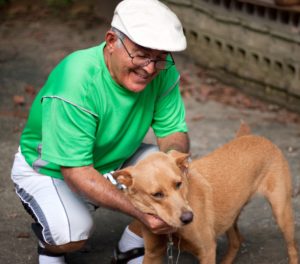 Students all around the country are wrapping up their semesters. The internet is exploding with pet videos to soothe their weary minds and parents and grandparents everywhere are making celebration plans for their graduates. As promised, following are some ideas for preserving these young folks’ life memories to date. In fact, years from now it is often the stories of childhood and youth that we beg our older relatives to tell just one more time. Decades in the future your fabulous young person’s family will love to see photos and hear stories of events that helped shape them into who they are.
Students all around the country are wrapping up their semesters. The internet is exploding with pet videos to soothe their weary minds and parents and grandparents everywhere are making celebration plans for their graduates. As promised, following are some ideas for preserving these young folks’ life memories to date. In fact, years from now it is often the stories of childhood and youth that we beg our older relatives to tell just one more time. Decades in the future your fabulous young person’s family will love to see photos and hear stories of events that helped shape them into who they are.
How Can You Help?
Problem Solved–continue reading for your 3 step, easy plan to make this happen
Here are 3 steps to focus your ideas, gather material and then what you can do with this wonderful story. The key to creating this in a short amount of time is to narrow the scope of your project, gather all your material in one place and then use some easy online or physical tools to make it a tangible reality.
Step 1
Pick Your Person and Your Focus
Let’s use the example of a high school or college age young person about to graduate. Decide whether you want to run through a quick general story of their life or focus on a theme of sports, music, hobbies or other interest. For young folks I recommend doing an overview of their life as it shows so many different sides of who they are as a person. This is who you want to honor, right? Even big “kids” delight in seeing photos and hearing stories about when they grew up. Include these original bits, it shows them how valued and loved they are.
I spoke with a gifted wedding photographer earlier this week and she emphasized the importance of having some hard copy photos of your life events. Hang them around your house, put them in an album for the coffee table, put them in places you can actually hold and touch. Printed photos are preserved and enjoyed in a way that purely digital photos just can’t compete with. Besides, when that solar flare finally hits or some other catastrophe, don’t you want to have a photo of the people you love to hold even if you don’t have electricity? Oh yes you do! And we all know those convenient cell phones that hold most of your photos sometimes meet an untimely end in laundry or toilet. Don’t make them the sole repository of your life’s memories.
Step 2
Gather Your Material
Pull together photos, artwork, notes and stories from a representative sample of years. I like to take material and photos from about every 2-3 years during a young person’s life. This will usually capture major changes and life events as well as show a progression of growth and interests.
It would be a great idea to interview your subject about some of their key memories of growing up. Even an hour or two of visiting can give you a wealth of stories to type up and include in your book. Best of all, you’ll both enjoy the process and you’ll also have their voice telling the stories. How awesome is that?
Best tip ever:
Do include a few school photos
BUT
Use primarily candid photos; they truly capture
the essence of someone’s personality.
 Like this one!
Like this one!
My hands down favorite photo of my brother and I.
So thankful my mom had the foresight to take one
showing us as we looked most of the time instead of
all spiffed up in dress clothes.
11 Interview Questions to get you Started
What do you think are the 3 most important things in life?
Who was/is your best friend in school and why?
What are 10 things that make you laugh?
What do you imagine the world will look like 100 years from now?
What is your favorite childhood memory?
Who was your favorite teacher and why?
Describe your pet(s) and why you enjoy them.
Describe your siblings and what you enjoy doing together.
What things do you enjoy for fun?
Who has been the kindest to you?
Describe a happy moment in your life.
Step 3
Publish Your Story—Print it
Create a tangible book that your graduate can hold and page through, sharing with others. There are several different ways you can do this. Here are 3:
*Scrapbook–A few years ago this was all the rage and can still be a popular tool to creatively share your story. If you enjoy this dig out your supplies, pick up a new album and then give yourself some time to create a beautiful work of art with these saved memories.
*Shutterfly or similar photo book—photo books that can be created online give you quite a bit of creative flexibility and will turn out a nicely bound high quality book. Coupons abound for these types of gifts and the digital creation process is designed to be pretty simple. And yes, you can have both text and photos in the book. Make sure to use both as years from now they’ll want the story behind the photos. Frequent sales with these companies can often bring the price down to not much more than producing it at the local print shop.
*Copy Shop coil bound book—if dollars are tight, never fear, your young person will appreciate and cherish this book format just as much. Here’s a couple ways to do this—first–computer set up– take the photos and text you’ve collected and arrange them in a document on your computer. You can get creative with color, text styles and photo placement. When you like the way it looks create a PDF file to lock everything in place. Then, put it on a jump drive, take it to your local copy shop and have them print up several copies with a coil binding and nice quality paper. Use a heavier glossy card stock for the cover and glossy finish paper inside to really make those photos pop. A book like this will usually run less than $20 to print.
For each of these options I encourage you to include at least a couple photos that are black and white. You can easily convert your color images to this classic style. They have a timeless quality that somehow shows the subject in a different way that really draws out their personality and character.
Now print or order several copies of your gift book. I guarantee it will stand out and it will be cherished, there is nothing more unique and precious than someone’s life story. Your graduate will treasure this always. And of course, you’ll want one for yourself and other family members as well.
Have fun with the process of making this amazing gift for your beloved young person. They will love it and remember it always.

 Taking time to intentionally remember, to encourage and help draw out memories for people who are struggling with memory impairment are critical for quality of life and slowing down the process of memory loss. Our memories can help us feel connected and loved. If you have a memory challenged family member or friend encourage their “remember when…” moments by using sensory triggers. These might be a photo, smells like baked goods, apples, green chile or perfume. Or it might be a favorite item of clothing, music or the furry touch of a pet. Get creative and ask them what they remember when you share these prompts. Its wonderful exercise for the brain and you may learn some things you didn’t know about their life.
Taking time to intentionally remember, to encourage and help draw out memories for people who are struggling with memory impairment are critical for quality of life and slowing down the process of memory loss. Our memories can help us feel connected and loved. If you have a memory challenged family member or friend encourage their “remember when…” moments by using sensory triggers. These might be a photo, smells like baked goods, apples, green chile or perfume. Or it might be a favorite item of clothing, music or the furry touch of a pet. Get creative and ask them what they remember when you share these prompts. Its wonderful exercise for the brain and you may learn some things you didn’t know about their life.